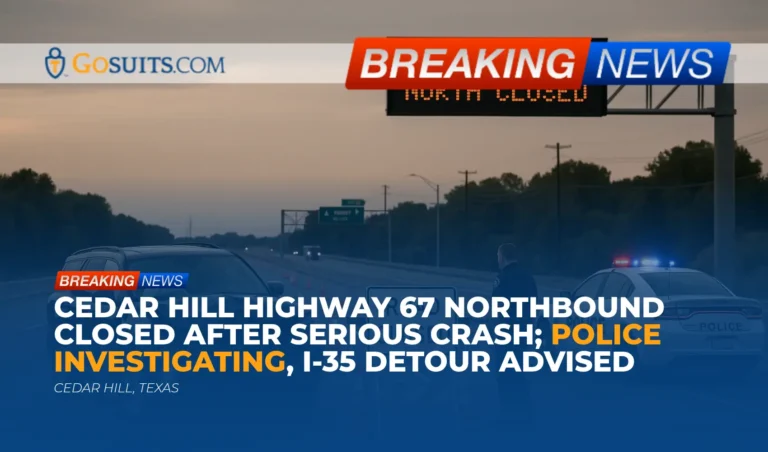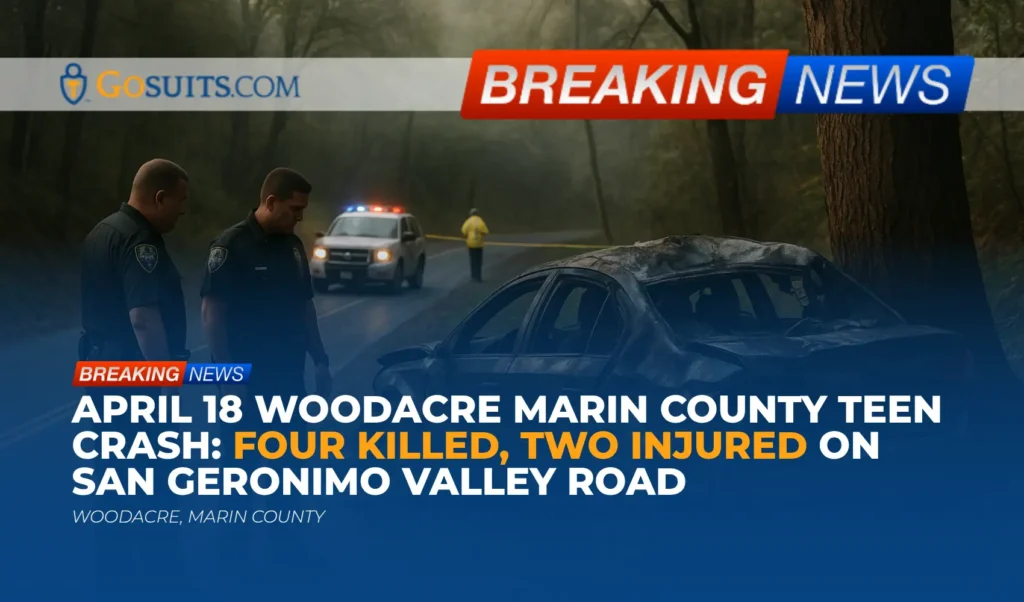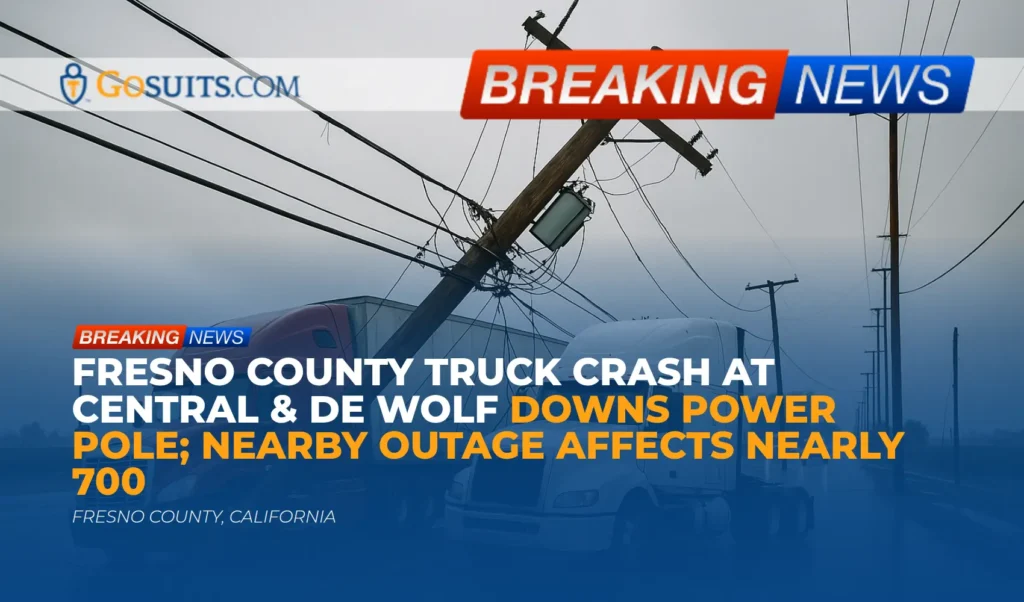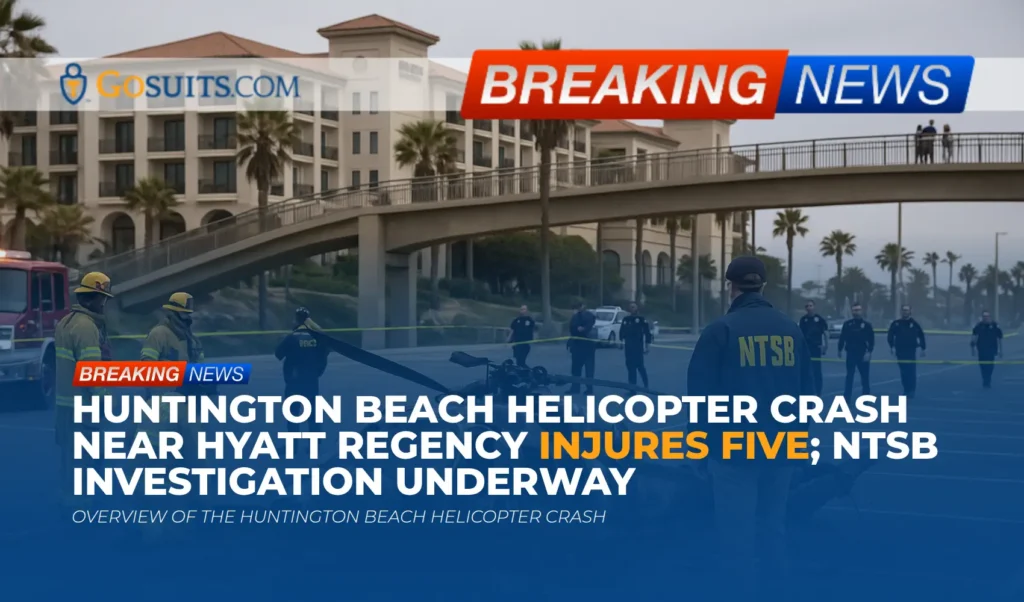- What is known about the Highway 67 closure in Cedar Hill
- The investigation process and what “extended time” closures mean
- Where to find official traffic updates and verified information
- If you or a loved one were involved: immediate health, safety, and documentation steps
- How to obtain official records: police crash reports, 911 audio, and medical examiner information
- Understanding potential civil liability in a Texas highway crash
- Insurance coverage and claim considerations in Texas
- Important Texas timelines and notice requirements
- Safety reminders for drivers near crash scenes and detours
- Key agencies and offices to contact for help and documentation
- Commentary from Gosuits Cedar Hill, Texas Personal Injury Attorney
- Why timely action matters and what to do next
- Sources cited
What is known about the Highway 67 closure in Cedar Hill
According to a local news report, northbound lanes of Highway 67 in Cedar Hill were closed on Monday evening, October 13, 2025. The Cedar Hill Police Department reported that the closure at Cooper Street would last for an “extended time” while officers investigated a serious crash. At the time of reporting, it was not yet known how many vehicles were involved or whether there were injuries. Drivers traveling from Midlothian toward Duncanville were advised to use I-35 as an alternative route. This is a developing situation, and details may change as the official investigation progresses.
Because investigators held the scene for an extended period, it is typical for specialized units to document skid marks, debris fields, vehicle damage patterns, and roadway conditions. Road closures like this are intended to protect first responders, preserve evidence, and prevent secondary crashes as traffic backs up or detours around the area.
The investigation process and what “extended time” closures mean
When police announce an “extended time” closure after a serious highway crash, it usually signals that the scene requires detailed documentation. In many Texas cities, patrol officers secure the area while crash reconstruction-trained personnel take measurements, map the scene, and collect evidence. Depending on the circumstances, they may also examine factors such as visibility, lighting, the condition of the roadway surface, weather, and traffic control devices.
Potential steps that may occur during an extended closure include:
- Scene safety and stabilization: Ensuring fire hazards are mitigated, vehicles are secured, and any fuel spills are addressed so responders can work safely.
- Medical triage and transport: Emergency medical services evaluate and transport the injured, if any.
- Evidence preservation: Officers document vehicle positions, measure gouge marks and skid distances, and photograph debris distribution.
- Witness contact: Investigators often seek dashcam footage and statements from drivers and bystanders who saw the crash or its aftermath.
- Vehicle inspections: If appropriate, investigators may examine brake systems, tire conditions, and onboard electronic data (event data recorders) for later analysis.
Families awaiting word from authorities can find this process stressful. It is reasonable to call the non-emergency line for the local police department to confirm whether your family member’s name appears on an incident roster or to learn which hospital ambulances went to. If a fatality is confirmed, next-of-kin notifications are typically made by law enforcement or the medical examiner before names are released publicly.
Where to find official traffic updates and verified information
To avoid rumors and outdated posts, look for updates from official government sources. In Texas, roadway closures and detours are often announced or confirmed by transportation and law enforcement agencies.
- Texas Department of Transportation (TxDOT): TxDOT provides statewide traffic information and publishes crash statistics and safety advisories. Agency pages at txdot.gov provide authoritative information about crash reports and traveler safety policies.
- Statutory releases of crash reports: Texas law governs who can obtain a crash report and when. The statute is available at the Texas Legislature’s site: Transportation Code § 550.065.
- City and county public information portals: Many cities post public safety updates and press releases. If you seek records, Texas’s Public Information Act guidance is published by the Texas Attorney General at texasattorneygeneral.gov.
For those navigating the area, keep in mind that secondary road congestion and frustration can raise risks. If diversion was advised to I-35, expect heavier flow there and maintain extra following distance.
If you or a loved one were involved: immediate health, safety, and documentation steps
After a serious highway incident, health and safety come first. Even if you feel “okay,” seek medical evaluation promptly; some traumatic injuries are not obvious on scene. Beyond immediate care, a few early steps can help protect your options later, especially when facts are still emerging.
- Get a medical evaluation as soon as possible: Document symptoms and follow your provider’s advice. Some injuries, including concussions and soft-tissue damage, can worsen over 24 to 72 hours.
- Preserve evidence you control: Save dashcam files, in-vehicle infotainment logs, and photos from the scene. Back up your phone images and videos to a secure location.
- Identify witnesses: If you collected names or phone numbers at the scene, store them safely. Neutral third-party witnesses can be important if facts are disputed.
- Secure vehicle access: If your vehicle was towed, find out the tow yard’s name quickly and request that the vehicle not be altered or destroyed. Photograph the vehicle in its post-crash condition if you can do so safely and lawfully.
- Be cautious with insurance communications: Before giving recorded statements or signing forms, consult an attorney. What is said to an insurer, even yours, may be used later to limit recovery or assign fault.
If you are assisting an injured family member, consider keeping a simple diary of symptoms, appointments, out-of-pocket costs, and missed work. Accurate records can assist with claims and provide clarity during a stressful time.
How to obtain official records: police crash reports, 911 audio, and medical examiner information
Police crash reports in Texas
Texas law provides two primary forms connected to a crash: the CR-3 (officer’s crash report) for reportable crashes and, sometimes, a short “exchange” form provided at the roadside. The CR-3 is generally available to individuals and entities listed in the statute. Eligibility and release are governed by Transportation Code § 550.065.
Key points about Texas crash reports:
- Availability window: Many CR-3 reports appear within days to a few weeks after the crash, depending on the agency’s workload and complexity of the investigation.
- Who can obtain: People involved in the crash, their authorized representatives, vehicle owners, insurance carriers, and certain news media are typically eligible under statute.
- Where to request: TxDOT publishes instructions for crash reports on txdot.gov. Many agencies also provide report numbers directly to involved parties.
911 audio, incident reports, and body-worn camera footage
Non-crash records such as dispatch logs, 911 recordings, and some body-worn camera footage may be available through a public information request. Texas Public Information Act guidance from the Attorney General’s office can help residents understand request procedures and exceptions: Open Government: Members of the Public. Note that certain records may be redacted or withheld during an active investigation or to protect privacy.
Medical records and EMS run sheets
Patients generally have a right to access their own medical records, including emergency medical services run reports. Federal guidance on the right of access is available from the U.S. Department of Health and Human Services: HIPAA Right of Access. Hospitals and EMS providers may require proper identification or proof of authority for representatives or family members.
Medical examiner or justice of the peace information
If a fatality occurred, jurisdiction typically rests with the county medical examiner (in counties that have one) or a justice of the peace. These offices coordinate examinations, certifications of cause and manner of death, and next-of-kin notifications. Families can usually request certified death certificates through the county or the state vital statistics office. When unsure which county has jurisdiction, ask the investigating police agency which medical authority responded to the scene.
Understanding potential civil liability in a Texas highway crash
Without confirmed details on vehicle count, mechanisms of impact, or injuries, it is too early to assign fault for this Highway 67 crash. Generally, however, Texas law applies familiar negligence principles to highway collisions. Investigations focus on whether any driver failed to use ordinary care under the circumstances and whether that failure caused harm.
Common factual issues in highway collisions
- Speed and following distance: Excessive speed or inadequate following distance can increase stopping distances and crash severity. National data show speed as a persistent factor in serious crashes each year, according to the U.S. Department of Transportation.
- Distraction: Looking away from the road for a few seconds at highway speeds can equal the length of a football field traveled blind. Distraction analysis may include cell phone records and infotainment logs.
- Impairment and fatigue: Alcohol, drugs, or fatigue can impair reaction times and judgment. Toxicology results, if applicable, and witness accounts may be considered.
- Lane discipline and merges: Abrupt lane changes, failure to signal, or unsafe merges near ramp areas often contribute to multi-vehicle events.
- Secondary crashes: Backup and rubbernecking near a primary crash can trigger additional collisions if approaching drivers do not slow or move over.
Multi-vehicle crashes and proportionate responsibility
Texas uses a proportionate responsibility framework. Fault can be allocated among multiple parties, including drivers and, in some instances, corporate or governmental entities. A claimant who is found more than 50 percent responsible is barred from recovery; if 50 percent or less, any recovery may be reduced by the claimant’s percentage of responsibility. See Texas Civil Practice and Remedies Code Chapter 33.

Commercial vehicles and additional considerations
When a commercial motor vehicle is involved, investigators may consider driver qualification, hours-of-service compliance, maintenance records, and company safety policies. Federal rules are published by the Federal Motor Carrier Safety Administration, including hours-of-service limitations: FMCSA Hours of Service. In civil cases, evidence from electronic logging devices, dispatch records, and pre- and post-trip inspections can be important.
Roadway conditions and governmental entities
In some cases, claims touch on roadway design, maintenance, or traffic control. Claims against governmental units follow special rules and limited waivers under the Texas Tort Claims Act, which also includes strict notice deadlines. See Texas Civil Practice and Remedies Code § 101.101 regarding notice. These issues are fact-specific and require careful evaluation.
Insurance coverage and claim considerations in Texas
Insurance can be complex after a serious highway crash, especially when multiple vehicles or commercial carriers may be involved. Understanding the types of coverage and early pitfalls can help people protect their rights.
Liability, UM/UIM, and PIP coverage
- Liability coverage: Texas requires minimum liability limits, commonly known as 30/60/25. This means $30,000 per injured person, up to $60,000 per crash, and $25,000 for property damage. See consumer guidance at the Texas Department of Insurance: tdi.texas.gov.
- Uninsured/Underinsured Motorist (UM/UIM): UM/UIM can cover losses when the at-fault driver has no insurance or not enough. Insurers must offer it in Texas; it can be rejected in writing. TDI provides consumer information about these coverages.
- Personal Injury Protection (PIP): PIP can help with medical costs and certain lost wages regardless of fault. It is typically offered unless rejected in writing.
Recorded statements and early settlements
- Talk to a lawyer first: Before giving a recorded statement to any insurer, consult an attorney. Statements can be used later to argue comparative fault, minimize injuries, or dispute causation.
- Be wary of quick offers: Early settlement offers may come before the full scope of injury is known. Once a release is signed, claims generally cannot be reopened for later-discovered harms.
- Vehicle valuation: If a vehicle is declared a total loss, valuation disputes can arise. Keep maintenance records and pre-crash photos if available.
Coordinating benefits
Health insurance, MedPay/PIP, and liability coverage may intersect. Subrogation and reimbursement rights can affect final recoveries. Texas consumers can review general insurance rights and complaint processes through the Texas Department of Insurance at tdi.texas.gov/consumer/complaints.html.
Important Texas timelines and notice requirements
Deadlines matter. Missing one can limit or end the ability to bring a civil claim. Below are general timeframes under Texas law. Always verify how these apply to a specific situation.
- Personal injury and wrongful death: In many cases, a two-year limitations period applies. See Texas Civil Practice and Remedies Code § 16.003.
- Governmental entities: Claims involving a governmental unit may require notice within six months, and some local charters have even shorter deadlines. See § 101.101.
- Insurance deadlines: Policy provisions may require prompt notice, cooperation with investigations, and proof-of-loss submissions.
- Evidence preservation: Vehicle data, surveillance footage, and dashcam files can be overwritten quickly. Preservation letters should be sent promptly to prevent loss of crucial information.
Safety reminders for drivers near crash scenes and detours
Secondary crashes are a significant risk near an active incident. National data consistently show that speed and distraction contribute to severe outcomes on highways. Simple steps can reduce risks for everyone on the road.
- Move Over or Slow Down: Texas law requires drivers to move over or slow down when passing emergency vehicles with lights activated. See Transportation Code § 545.157.
- Increase following distance: Leave room for sudden stops when traffic compresses near a closure.
- Eyes up, phone down: Avoid distraction. Even brief glances away from the road at highway speeds translate into long distances traveled without attention.
- Respect detours: Detour routes can create unusual merging and weaving patterns. Signal early and be patient with other drivers.
- Seat belts save lives: Proper restraint use reduces the risk of severe injury and death, as consistently reported by federal safety agencies.
Key agencies and offices to contact for help and documentation
The following points of contact commonly assist after a highway crash. Availability and procedures can vary by jurisdiction. Use official channels and be ready with the date, time, location (Highway 67 at Cooper Street, Cedar Hill), and any incident or case number provided by officers.
- Local Police Department (Records Unit): Request the crash report number, incident report, and instructions on how to obtain the full CR-3 once available. Ask for the tow rotation list used for the scene to locate your vehicle.
- County Medical Examiner or Justice of the Peace: If there was a fatality, confirm which office has jurisdiction and how next-of-kin notifications and record requests are handled.
- Hospitals and EMS providers: Request medical records and billing statements. Federal guidance on access rights is available from HHS at HHS Right of Access.
- TxDOT crash report guidance: Visit txdot.gov for official information on Texas crash reports and how they are released under state law.
- Texas Attorney General — Public Information Act: If you need 911 audio, radio traffic logs, or certain video records, review request steps at texasattorneygeneral.gov/open-government.
- Texas Department of Insurance: For consumer information on auto coverage, claim processes, and complaint resources, see tdi.texas.gov.
If you are uncertain which county has jurisdiction over a Highway 67 incident in Cedar Hill, ask the responding agency which medical authority and tow rotation were used. Cedar Hill lies within the North Texas region and includes areas of Dallas and Ellis counties; jurisdiction can differ based on the exact crash location.

Commentary from Gosuits Cedar Hill, Texas Personal Injury Attorney
Our hearts are with everyone affected by the Highway 67 crash and with the community coping with the disruption and uncertainty that follow a serious roadway incident. This article is intended for general information and education in the aftermath of a developing event.
At a high level, extended closures typically indicate that investigators are working carefully to document the scene. That level of documentation can be vital later, especially if there are disputed accounts or if commercial vehicles were involved. The sooner crucial evidence is preserved — vehicle data, dashcam footage, and witness contact information — the clearer the factual picture becomes.
In our experience, insurance carriers and large corporations often move quickly to protect their interests. Adjusters may request recorded statements, medical authorizations, or vehicle inspections on their timelines. People unfamiliar with claim processes can feel pressured to agree to terms before they have a full diagnosis or complete understanding of long-term needs. Statements given in the early hours and days can be used to contest liability or minimize the value of a claim. Taking the time to understand rights and options can help restore balance.
A free consultation with a seasoned injury attorney can help people identify immediate priorities, avoid missteps with insurers, and plan an evidence-preservation strategy. Consulting with counsel early is especially important before speaking with any insurance company about fault or injuries.
Why timely action matters and what to do next
Time matters after a serious highway crash, even when facts are still emerging. Acting promptly can protect health, preserve rights, and prevent the loss of critical evidence. The following steps outline what should be done and why it matters.
- Prioritize medical evaluation and follow-up: Prompt care helps identify hidden injuries, connects symptoms to the crash in the medical record, and supports safe recovery planning. Delays can complicate both health outcomes and insurance evaluations.
- Preserve evidence immediately: Back up dashcam files, save photos, and secure the vehicle. Tow yards may move or dispose of vehicles, and electronic data can be overwritten. Early preservation protects crucial facts.
- Document expenses and impacts: Keep receipts, track missed work, and maintain a simple log of symptoms and medical visits. Clear records support accurate claim documentation.
- Consult an attorney before speaking with any insurer: A brief call can help people understand coverage, liability issues, and the risks of recorded statements. What is said to an insurance company can be used later.
- Request official records as they become available: Obtain the crash report number from the police, request medical records from providers, and consider making a public information request for dispatch logs or 911 audio when appropriate.
- Be mindful of legal timelines: Texas limitations periods and governmental notice requirements can be strict. Acting early helps ensure deadlines are identified and met.
Acting now provides clarity and preserves options. Waiting can lead to lost evidence, missed deadlines, and increased uncertainty during an already difficult time.
Sources cited
- Texas Transportation Code § 550.065 (Release of accident reports)
- Texas Civil Practice and Remedies Code Chapter 33 (Proportionate Responsibility)
- Texas Civil Practice and Remedies Code § 16.003 (Limitations for personal injury and wrongful death)
- Texas Civil Practice and Remedies Code § 101.101 (Notice to governmental unit)
- Texas Transportation Code § 545.157 (Move Over/Slow Down)
- Texas Department of Transportation (TxDOT)
- Federal Motor Carrier Safety Administration (Hours of Service overview)
- Texas Attorney General — Public Information Act guidance
- Texas Department of Insurance — Consumer resources
- U.S. Department of Health and Human Services — HIPAA Right of Access






